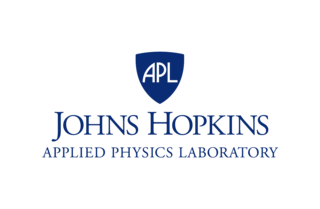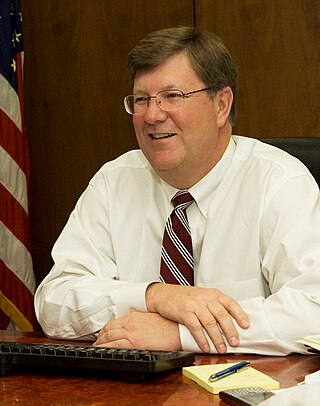
The Technion – Israel Institute of Technology is a public research university located in Haifa, Israel. Established in 1912 by Jews under the dominion of the Ottoman Empire, the Technion is the oldest university in the country.

Ralph Asher Alpher was an American cosmologist, who carried out pioneering work in the early 1950s on the Big Bang model, including Big Bang nucleosynthesis and predictions of the cosmic microwave background radiation.
The University of Tennessee Space Institute (UTSI) is a satellite campus of the University of Tennessee located near Tullahoma, Tennessee.

The Johns Hopkins University Applied Physics Laboratory is a not-for-profit university-affiliated research center (UARC) in Howard County, Maryland. It is affiliated with Johns Hopkins University and employs 8,700 people as of 2024. APL is the nation's largest UARC.

The Khajeh Nasir Toosi University of Technology is a public research university in Tehran, Iran. It is named after medieval Persian scholar Khajeh Nasir Toosi. The university is considered one of the most prestigious institutions of higher education in Iran. Acceptance to the university is highly competitive, entrance to undergraduate and graduate programs typically requires scoring among the top 1% of students in the Iranian University Entrance Exam.
The G.W.C. Whiting School of Engineering is the engineering college of the Johns Hopkins University, a private research university in Baltimore, Maryland.
Sally P. Horn is a professor at the University of Tennessee, Knoxville. Her work in Costa Rica and other tropical regions has been featured in a number of publications, including National Geographic. She has published over 100 articles relating to paleolimnology and biogeography. She is director of the University of Tennessee Laboratory of Paleoenvironmental Research and associate director of the Laboratory of Tree-Ring Science. Horn was named one of the first University of Tennessee Chancellors Professors in 2009.
Frederick Stucky Billig was an American aerospace engineer who was a pioneer in the development of scramjet propulsion.

Robert D. "Rob" Strain is the former Director of NASA's Goddard Space Flight Center. Strain held that post from August 4, 2008, through March 5, 2012. Strain announced in January 2012 that he will retire from NASA and return to private industry.

The University of Tennessee, Knoxville is a public land-grant research university in Knoxville, Tennessee. Founded in 1794, two years before Tennessee became the 16th state, it is the flagship campus of the University of Tennessee system, with ten undergraduate colleges and eleven graduate colleges. It hosts more than 30,000 students from all 50 states and more than 100 foreign countries. It is classified among "R1: Doctoral Universities – Very high research activity".
John D. Petersen is an American chemist and educator who was president of the University of Tennessee system.
The College of Science at Virginia Tech contains academic programs in eight departments: biology, chemistry, economics, geosciences, mathematics, physics, psychology, and statistics, as well as programs in the School of Neuroscience, the Academy of Integrated Science, and founded in 2020, an Academy of Data Science. For the 2018-209 academic year, the College of Science consisted of 419 faculty members, and 4,305 students, and 600 graduate students The college was established in July 2003 after university restructuring split the College of Arts and Sciences, established in 1963, into two distinct colleges. Lay Nam Chang served as founding dean of the College of Science from 2003 until 2016. In 2016, Sally C. Morton was named dean of the College of Science. Morton served in that role until January 2021, when she departed for Arizona State University and Ronald D. Fricker—senior associate dean and professor in the Department of Statistics—was named interim dean of the College. In February 2022, Kevin T. Pitts was named the third official dean of the College of Science.
Jimmy G. Cheek is Chancellor Emeritus and Distinguished Professor Emeritus of Higher Education in Department of Educational Leadership and Policy Studies at The University of Tennessee, Knoxville (UTK) and Former Director of the Postsecondary Education Research Center. He is also Professor Emeritus at the University of Florida. As the state's flagship research campus, UT Knoxville is currently ranked as a Top 50 public institution.

Dr. Paul N. Stockton is the President of Paul N Stockton LLC, a strategic advisory firm in Santa Fe, NM. From 2009 to 2013, Dr. Stockton served as Assistant Secretary of Defense for Homeland Defense and Americas' Security Affairs, where he helped lead the department's response to Hurricane Sandy. He was responsible for Defense Critical Infrastructure Protection, Western Hemisphere security policy, domestic crisis management, continuity of operations planning, and a range of other responsibilities. While Assistant Secretary, Dr. Stockton also served as executive director of the Council of Governors. After serving as Assistant Secretary, Dr. Stockton was the managing director of Sonecon LLC, an advisory firm in Washington, DC, from 2013 to 2020.
Michael J. Kuhar, is an American neuroscientist, author, and Candler Professor of Neuropharmacology at The Emory National Primate Research Center of Emory University. He is a Georgia Research Alliance eminent scholar, and a senior fellow in the Center for Ethics at Emory. He was previously a professor at Johns Hopkins University School of Medicine and branchchief at the National Institute on Drug Abuse.
Michael F. Brown is an American chemist. Since 1987, he has been a Professor of Chemistry at the University of Arizona, and since 2003 has held joint appointments as a Professor of Physics and Professor of Applied Mathematics. Prior to the University of Arizona, Brown earned tenure at the University of Virginia. His research involves the application of NMR spectroscopy and other biophysical methods to study membrane lipids, liquid crystals, and membrane proteins. Brown has particularly been a pioneer in the application of solid-state NMR spectroscopy to the study of lipid bilayer dynamics.
Prasenjit Sen is a professor at the School of Physical Sciences of Jawaharlal Nehru University, New Delhi, India.
Richard S. Potember is an American scientist and inventor. He is currently a principal systems engineer at MITRE. Prior to this he was a program manager in the Tactical Technology Office at the Defense Advanced Research Projects Agency (DARPA). He has been an instructor at the Whiting School of Engineering at the Johns Hopkins University since 1987. He was a member of the principal professional staff at the Johns Hopkins Applied Physics Laboratory, Laurel, Maryland, from 1981 to 2015. He served as an adjunct professor at The Paul H. Nitze School of Advanced International Studies from 1995 to 1998. He is best known for his pioneering work in developing electrical and optical materials and devices, as well as for his biomedical and biodefense research.

Subrata Roy is an Indian-born American inventor, educator, and scientist known for his work in plasma-based flow control and plasma-based self-sterilizing technology. He is a professor of Mechanical and Aerospace Engineering at the University of Florida and the founding director of the Applied Physics Research Group at the University of Florida.
Xiuling Li is a distinguished electrical and computer engineering professor in the field of nanostructured semiconductor devices. She is currently the Temple Foundation Endowed Professorship No. 3 in Electrical and Computer Engineering and Fellow of the Dow Professor in Chemistry at the University of Texas at Austin. Previously, she was a Donald Biggar Willet Professor in Electrical and Computer Engineering and Interim Director of the Nick Holonyak Jr. Micro and Nanotechnology Laboratory at the University of Illinois at Urbana-Champaign.







